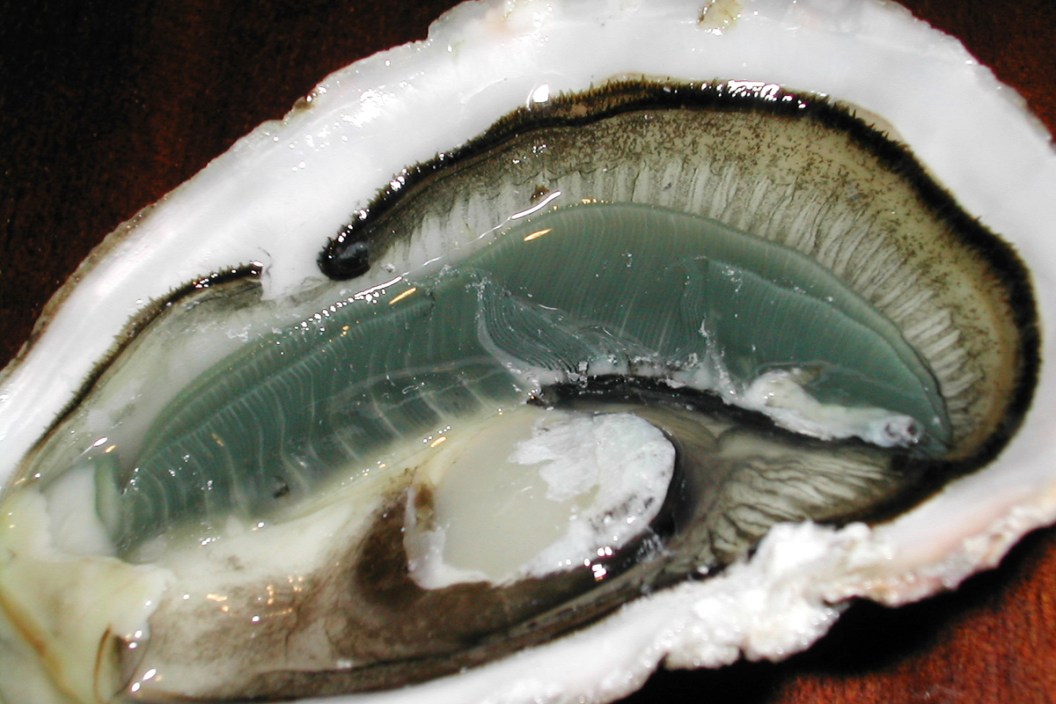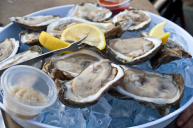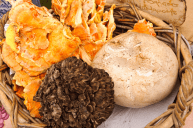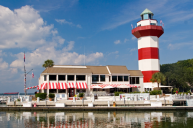Who would've thought we'd have a microalgae to thank for giving us a seafood delicacy?? Specifically a microalgae named haslea ostrearia which blooms in areas of North Carolina in the winter. This East Coast diatom (or algae group) contains a pigment known as marennine that stains the oysters' gills a bright blue-green color. The oysters feed on this particular algae and in a perfect example of 'you are what you eat', the oyster's gills turn green. Even though the oysters are the same as regular color oysters, that green color is why they're called green gill oysters. Whether in Durham or Raleigh, you can find these green oysters at oyster farms, oyster reefs, and tasting tables everywhere.
Green gills even have health benefits in addition to extra creamy, truffle like flavor and especially delicious briny taste. The pigment has been found to have powerful antioxidant, antibacterial, and antiviral properties. More research is being done on this magical shellfish. And while in France, these oysters are considered a delicacy, North Carolinians have been a little reluctant to go green.
Fines de claires oysters from France's Marennes-Oléron region are the equivalent of the North Carolina green gill oysters. The oysters feed on the same blue green algae that grows there and turns their oysters an olive green color. These green oysters have been revered for 100's of years in France with oyster growers making bigger bucks for the green fines de claires oysters than plain colored oysters. Unfortunately, the complete opposite has been true for American oyster farmers.
Why North Carolina?
North Carolina's waterways seems to have the perfect growing condition for the magic algae that gives us green gill oysters. The North River marshes, near Beaufort, are a hotspot for for the blue haslea ostrearia microalgae.
But even with ideal conditions, North Carolina oyster harvesters and restaurants have been throwing their green gill oysters in the garbage or selling them for very cheap. France's oyster harvesters would likely die reading that, but it's the reality.
North Carolina is changing that perception one step at a time. Oyster bars and restaurants are hosting educational dinners and green gill oysters are being featured at the best restaurants in the Outer Banks and all the local seafood restaurants. They're only available in the spring so don't be upset if you can't get them when you go out to satisfy that shellfish craving.
Green gill oysters are known by some other names as well. Seventh generation fisherman Dave "Clammerhead" Cessna is a pioneer in getting Americans to eat green gill oysters. He calls his Atlantic Emerald oysters. The word "gill" makes me think of The Creature From The Black Lagoon. The North Sea Oyster Co. calls them Divine Pine oysters. Also a lovely name for the same green oysters.
Oyster farmers like Dave Cessna are so optimistic for the future of green gill oysters, he has teamed up with professor of aquaculture, Dr. Niels Lindquist of the University of North Carolina's Institute of Marine Sciences to form the Sandbar Oyster Company. A patent pending method is in development for raising native green gills that have strong shells and deep cups like the best cultivated oysters.
With this kind of enthusiasm, I have no doubt they'll become so popular that these beauties will become a sought after shellfish treat. I can't wait for my next trip to North Carolina!




